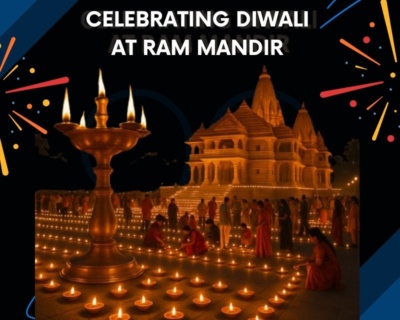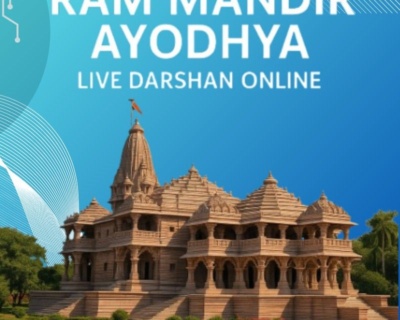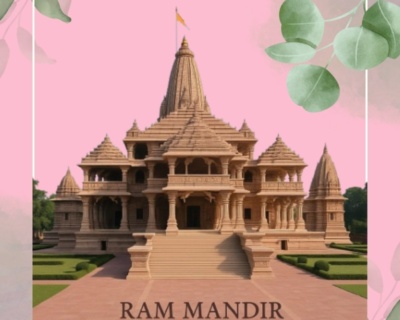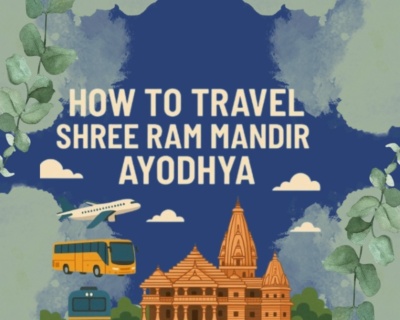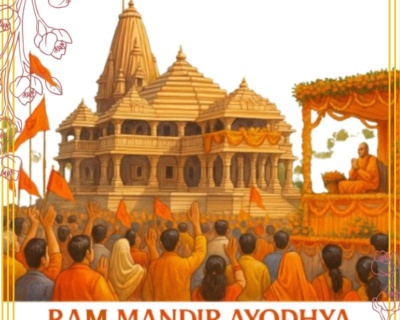Nearby Attractions to Explore Around Shree Ram Mandir
- May 25, 2025
- Uncategorized
The inauguration of the Shree Ram Mandir in Ayodhya has not only established the city as a major spiritual destination but has also reignited interest in its rich cultural and historical surroundings. While the temple is undeniably the spiritual heart of Ayodhya, the surrounding region is brimming with attractions that offer visitors a deeper understanding of its divine legacy, cultural vibrancy, and timeless beauty.
Whether you’re on a religious pilgrimage, a cultural exploration, or a family vacation, Ayodhya offers a variety of experiences beyond the temple walls. Here’s a detailed guide to some of the top nearby attractions to explore around Shree Ram Mandir.
1. Hanuman Garhi
Just about 1 kilometer from Ram Mandir, Hanuman Garhi is one of Ayodhya’s most revered temples. Dedicated to Lord Hanuman, the devotee of Lord Ram, this 10th-century temple is perched on a hilltop and requires climbing 76 steps to reach the sanctum.
Legend has it that Lord Hanuman lived here to guard Ayodhya. Devotees believe that a visit to Ram Mandir is incomplete without seeking Hanuman’s blessings first. The idol of Bal Hanuman in the lap of his mother Anjani is a captivating sight.
Why Visit:
- Breathtaking panoramic view of Ayodhya
- Strong spiritual aura
- Intricate carvings and historic significance
2. Kanak Bhawan
Located just a few hundred meters from Ram Janmabhoomi, Kanak Bhawan is another significant shrine dedicated to Lord Ram and Sita. It is believed that this palace was gifted to Sita by Kaikeyi after her marriage to Ram.
The temple houses beautifully decorated idols of Ram and Sita adorned with gold ornaments. The vibrant interiors, Rajasthani-style architecture, and festive ambiance make it a must-visit spot for devotees and art lovers alike.
Highlights:
- Ornate sculptures and royal architecture
- Peaceful courtyard
- Unique spiritual and romantic association with Ram and Sita
3. Sita Ki Rasoi
Right behind Ram Mandir lies Sita Ki Rasoi, a sacred spot believed to be the royal kitchen used by Sita during her time in Ayodhya. It is more of a symbolic representation today, featuring utensils, grinding stones, and idols of Ram’s family members.
This humble temple offers a glimpse into domestic life during the Ramayan era and is often visited by women seeking marital harmony and blessings.
Don’t Miss:
- Traditional kitchen set-up
- Darshan of Sita and her family idols
- Quiet and culturally enriching visit
4. Ram Ki Paidi
One of the most serene and scenic spots near Ram Mandir is the Ram Ki Paidi, a series of ghats (steps) built along the Sarayu River. Pilgrims come here for holy dips, especially during festivals, believing the waters to be purifying.
At sunrise and sunset, the ghats light up with diyas and devotional chants, offering a soul-stirring experience. The reflection of the Ram Mandir and surrounding temples on the river’s surface is mesmerizing, especially during Diwali and Kartik Purnima.
What to Do:
- Participate in evening aarti
- Enjoy boat rides
- Capture stunning photography
5. Treta Ke Thakur
Located near Naya Ghat and about 1.5 km from Ram Mandir, Treta Ke Thakur is a historic temple said to house the exact spot where Lord Ram performed the Ashwamedha Yagna after his return to Ayodhya.
Built in the 18th century by Kullu king, this temple features idols carved out of a single black sandstone block. Though the temple opens to the public only on special occasions, its spiritual significance makes it worth visiting anytime.
Highlights:
- Ancient architecture
- Ramayan-era relevance
- Special opening during Ekadashi
6. Nageshwarnath Temple
Legend says that this ancient Shiva temple was established by Kush, the son of Lord Ram. Situated near the Ram Ki Paidi area, Nageshwarnath Temple is not only a symbol of religious harmony (as it’s associated with both Vaishnavism and Shaivism) but also showcases stunning Nagara-style architecture.
The annual Shivratri Mela held here attracts thousands of pilgrims. It’s a peaceful site and ideal for those seeking a quieter spiritual encounter.
Notable Features:
- Serene spiritual ambiance
- Connection to Lord Ram’s lineage
- Beautifully adorned Shivling
7. Guptar Ghat
Around 10 km from Ram Mandir, on the outskirts of Ayodhya near Faizabad, lies Guptar Ghat. It is believed to be the site where Lord Ram took jal samadhi (divine departure into the river) and returned to Vaikuntha (the divine realm).
The ghat is beautifully maintained and ideal for meditation and river-facing prayer. The nearby Ram Temple at the ghat complements the quiet spirituality of the location.
Recommended For:
- Spiritual solitude
- Nature photography
- River meditation
8. Dashrath Mahal
Situated very close to Hanuman Garhi, Dashrath Mahal is said to be the original royal residence of King Dashrath, the father of Lord Ram. Though it is now a temple, the structure retains a regal essence with its vibrant paintings, colorful gateways, and ancient charm.
A must-visit for those wanting to complete the full Ramayan pilgrimage circuit within Ayodhya.
Attractions:
- Majestic entrance arches
- Life-size idols of Ram, Sita, Lakshman
- Connection to Ram’s royal ancestry
9. Bharat Kund (Nandigram)
Located approximately 20 km from Ayodhya, in the village of Nandigram, lies Bharat Kund a peaceful and emotionally charged site. According to legend, it is here that Bharat stayed during Lord Ram’s exile, ruling Ayodhya from afar while placing Ram’s sandals on the throne.
The temple and kund (pond) are surrounded by natural beauty and offer a quiet retreat for those wishing to connect deeply with Ramayan history.
Ideal For:
- Reflective spiritual time
- Scenic countryside escape
- Exploring devotion and duty
10. Mani Parbat and Sugriv Parbat
These two small hillocks located on the outskirts of Ayodhya are associated with the Ramayan and the legend of Hanuman’s flight to the Himalayas to fetch the Sanjeevani herb.
- Mani Parbat features a Buddhist stupa and temple.
- Sugriv Parbat holds ancient relics and offers panoramic views of the surrounding area.
For those interested in mythology, history, and natural beauty, these twin attractions are perfect.
Planning Your Visit: Travel Tips
- Best Time to Visit: October to March is ideal, especially during Diwali and Ram Navami.
- Transport: Local e-rickshaws and auto-rickshaws are available. Some attractions may require short taxi rides.
- Dress Code: Modest clothing is preferred, especially when entering temples.
- Local Guides: Consider hiring a local guide or using audio tour apps for richer context.
Conclusion: Beyond the Temple Walls
The grandeur of the Shree Ram Mandir is just the beginning. Ayodhya, steeped in spirituality and heritage, offers a multidimensional experience for every kind of traveler. From sacred ghats and divine temples to mythological landmarks and scenic retreats, the city’s surroundings invite visitors to immerse themselves fully in the life and legacy of Lord Ram.
Exploring these nearby attractions is not just about sightseeing it’s about walking through a living Ramayan, feeling the pulse of devotion in every corner, and discovering the timeless treasures of one of India’s most sacred cities.



